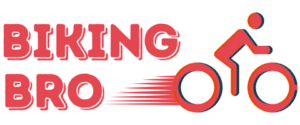If you’re looking forward to having a fun and comfortable bike ride, you need to figure out the suitable MTB tire pressure. Ordinarily, the pressure range is small, but it helps determine the performance of your bike during a ride.
On average, mountain bike tire pressure ranges between 22 PSI and 35 PSI. And the air in the rear is usually more than that of the front. The reason for this is because when you ride your bike, more of your weight is on the back.
Again, the exact MTB tire pressure depends on some factors; the type of tires your bike is running on, the route you are riding, your level of aggression when riding, and the general conditions of the tires.
Personal preference can also determine the pressure you’re using on your bike’s tires. But one thing is for sure – your fat tire bike MTB tire pressure can make a lot of differences when riding it. So, it’s advisable to give attention to this aspect of your bike.
Factors That Affect How Much MTB Pressure You Need

It isn’t very easy to give an exact answer to this question. It varies and depends on the riding style and trail conditions.
However, you can determine the pressure that works best on you based on the following factors:
1. Weight of the Biker
The heavier you are as a rider, the more pressure you need to run. The law of gravity plays a role here.
That’s why if you weigh 160lbs, you will run on more pressure than another person who weighs less. So, once you know your weight, you can determine the ideal pressure to run your bike which will also help you prevent chafing while biking.
2. Type of Terrain
This is another area you should take note of. If you ride a wet and rooty trail, I strongly advise you to drop the MTB tire pressure lower than usual.
For instance, if you ride on a Maxxis Ikon 2.35, you can use 20-22 PSI for a safer and stress-free ride. Also, if your bike’s tires are on stan Crest CB7 carbon wheels, you can run on about 17 PSI.
Since dry trails aren’t slippery, they tend to afford higher pressure. But if the trail seems very loose, it’s advisable to reduce the pressure by a few PSI. As a rule, use lower pressure when slipping around in corners. But always apply the brake before the corner.
Furthermore, if you’re an aggressive rider who always rides through rock gardens, goes fast off hucks, or you do more trail/all-mountain riding, you can adjust your bike gear shifter and increase your MTB tire pressure. For this style of riding, you can increase the pressure to about 25+ PSI.
The reason you have to increase the pressure is that when you ride fast, you tend to hit obstacles hard which will multiply the force.
Again, if your bike’s tires don’t have high pressure, they can’t handle the force when you hit the ground from a huge jump or hit something at a fast speed.
And this could lead to flat tires. Trust me, a flat tire during cycling is an awful experience. The best way to avoid this is to ride with consistently high pressure.
Many riders have learnt the importance of having high pressure the hard way. When your tires’ pressure is high, you can hit things a lot harder at a higher speed. And when you think the pressure is too high, you can always adjust it.
3. Front vs. Rear Tire
As a rule, ensure you always run more pressure on your rear tires (back tires) because it carries more weight. In my opinion, the ideal running pressure for both rear and front tires should be; 22 PSI rear and 20 PSI front.
Always remember that you can run on lower pressure like 20 PSI rear and 18 PSI front if your bike has a wider tire.
4. Tire Compound
Generally, tires are made with different compounds and casing depending on their weights. Most cyclists prefer Maxxis tires because their compounds are great for grip and their threads per inch are different.
Tires with higher TPI are usually light and give a more flexible feel when riding the bike. Similarly, tires with a lower TPI feel stiffer while riding it and will be more resistant to puncture and roll. So a low TPI will help you burn more calories while mountain biking.
So, Maxxis tires TPI is very high while that of downhill tires is low.
5. Width of Rims
Rim width is another crucial variable that determines the amount of pressure to run on your MTB bike. As a rule, the wider the rim, the lower the tire pressure. This is due to the surface area and volume.
For instance, if you’re riding a fat bike, you can run as low as 5 PSI for traction. Again, rim width is generally designed for different bike tire sizes which you can easily find on official manufacturer websites.
It would be a wrong idea to put a 2.8-inch tire on an XC rim because you believe the tire will expand with inflation.
Conclusion
It’s essential to always run your bike at the right pressure. However, pressure doesn’t have a static number. At every time, the pressure you’re running on your bike depends on your weight, the type of bike you’re using, the bicycle tubes and the nature of the tires you use.
Again, the outside temperature (hot or cold) and the terrain you ride on can increase or decrease the PSI of your tire. So, I recommend testing your tires’ pressure every day before you go cycling.
It doesn’t matter whether you’re using a gauge or calculator to get the right pressure to use on your bike. If you fail to take care of your tires, they will undoubtedly disappoint you in the middle of nowhere.
